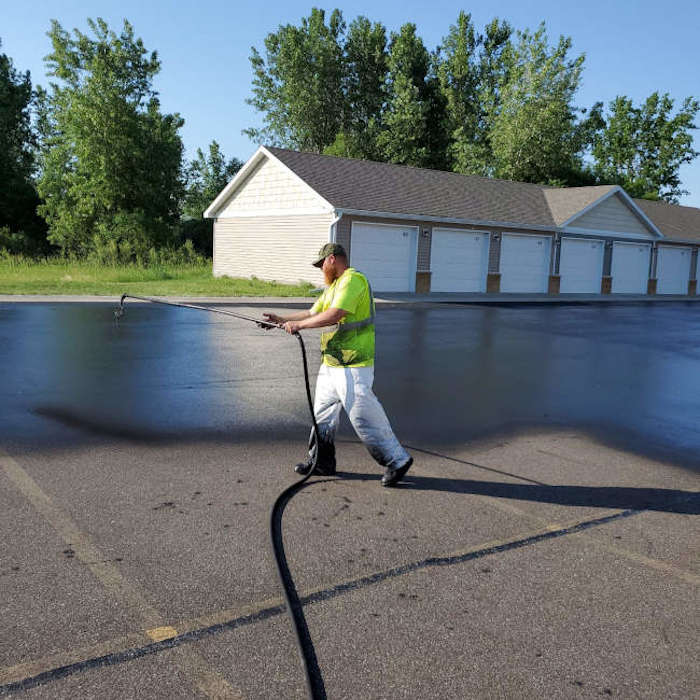Cold Mix Asphalt Vs. Hot Mix Asphalt: Which Is Right for You?

Make-up Differences
Cold mix and warm mix asphalts vary considerably in their make-up, with distinct qualities that influence their efficiency and applications. Cold mix asphalt is generated by emulsifying the asphalt binder with water and an emulsifying agent before blending it with accumulation. This approach permits for the asphalt to be workable at lower temperatures, making it excellent for short-term repair services and for usage in colder climate condition. Warm mix asphalt, on the various other hand, is made at heats, usually in between 300-350 ° F, which aids to attain better compaction and a much more resilient end product. The warm mix asphalt manufacturing procedure entails warming the aggregate and asphalt binder separately before combining them at the asphalt plant.
Additionally, cold mix asphalt tends to be less dense and more flexible than warm mix asphalt. This adaptability makes it far better fit for locations with higher levels of activity, such as driveways or roadways with rush hour. On the other hand, hot mix asphalt is known for its high sturdiness and resistance to rutting and breaking, making it a preferred choice for freeways and high-traffic roadways where durability is important.
Installation Process Differences
The procedure of setting up cool mix and hot mix asphalt displays noteworthy differences in their demands and treatments. In contrast, warm mix asphalt necessitates a much more elaborate setup procedure. Due to the home heating needs, hot mix asphalt setups are generally brought out by specialists with customized equipment, guaranteeing an extra structurally sound and long-term result.
Longevity and Longevity Factors
When taking into consideration asphalt alternatives, durability and durability are important aspects to review for long-term sidewalk efficiency. Warm mix asphalt (HMA) is recognized for its exceptional durability and longevity. The high temperatures throughout the laying and blending process permit much better compaction, leading to a denser and more powerful pavement structure. This leads to HMA being more resistant to rush hour tons, severe weather, and the results of maturing contrasted to chilly mix asphalt (CMA)
In regards to durability, HMA generally outperforms CMA as a result of its exceptional strength and resistance properties. HMA sidewalks have a longer life span, calling for less constant repair work and upkeep, which can translate to set you back savings in the future. Additionally, HMA sidewalks are more quickly customizable to satisfy specific job requirements, additionally enhancing their toughness.
Cost Considerations
Considering the monetary ramifications is a crucial aspect when examining the choice between hot mix asphalt (HMA) and cold mix asphalt about his (CMA) for pavement projects. While the initial price of warm mix asphalt is commonly greater than that of cold mix asphalt, HMA typically supplies a much more affordable solution in the long run due to its premium durability and long life.
In enhancement to material expenses, it's vital to think about the costs associated with installation and upkeep when contrasting HMA and CMA. Ultimately, the choice in between HMA and CMA ought to take right into account not just the preliminary price but likewise the lasting financial ramifications to determine the most economical alternative for the particular sidewalk task.
Environmental Impact Comparison
Contrast of the environmental impacts between warm mix asphalt (HMA) and cool mix asphalt (CMA) reveals unique distinctions in sustainability techniques. HMA production needs high temperature levels, leading to enhanced power intake and greenhouse gas emissions. The process likewise launches unpredictable organic compounds (VOCs) and harmful air toxins (HAPs) right into the atmosphere. On the other hand, CMA is created and used at reduced temperature levels, reducing energy usage and emissions substantially. The reduced manufacturing temperature levels of CMA cause decreased fuel consumption and lower levels of CO2 emissions, making it a much more ecologically pleasant choice.
Moreover, the usage of CMA commonly includes recycling existing asphalt sidewalk, promoting source conservation and reducing the quantity of waste sent to land fills. By choosing for CMA over HMA, roadway building and construction jobs can contribute positively to environmental conservation initiatives.
Conclusion
In conclusion, the option between chilly mix asphalt (CMA) and warm mix asphalt (HMA) depends on different factors such as structure, setup procedure, durability, durability, expense, and environmental influence. angle parking. While CMA supplies a cost-efficient and quick service for minor fixings, HMA ensures exceptional toughness and long life for heavy traffic areas. Think about these variables meticulously to determine which kind of asphalt is the best option for from this source your paving requires

Taking into consideration the monetary effects is a vital aspect when assessing the selection between warm mix asphalt (HMA) and cool mix asphalt (CMA) for pavement tasks. While the preliminary price of hot mix asphalt is generally greater than that of cold mix asphalt, HMA frequently gives a much more cost-effective solution in the long run due to its superior durability and longevity. asphalt repair.Comparison of the ecological effects between warm mix asphalt (HMA) and cold mix asphalt (CMA) exposes distinct distinctions in sustainability methods.In final thought, the option in between cool mix asphalt (CMA) and hot mix asphalt (HMA) depends on basics numerous elements such as structure, installation process, toughness, long life, cost, and environmental effect